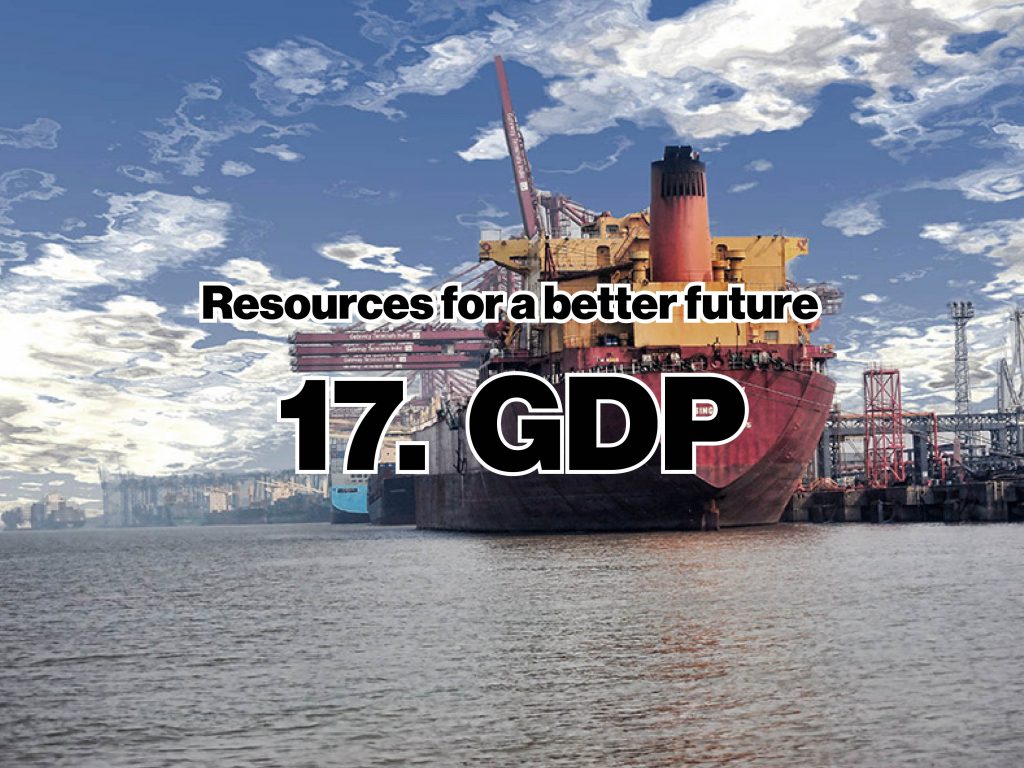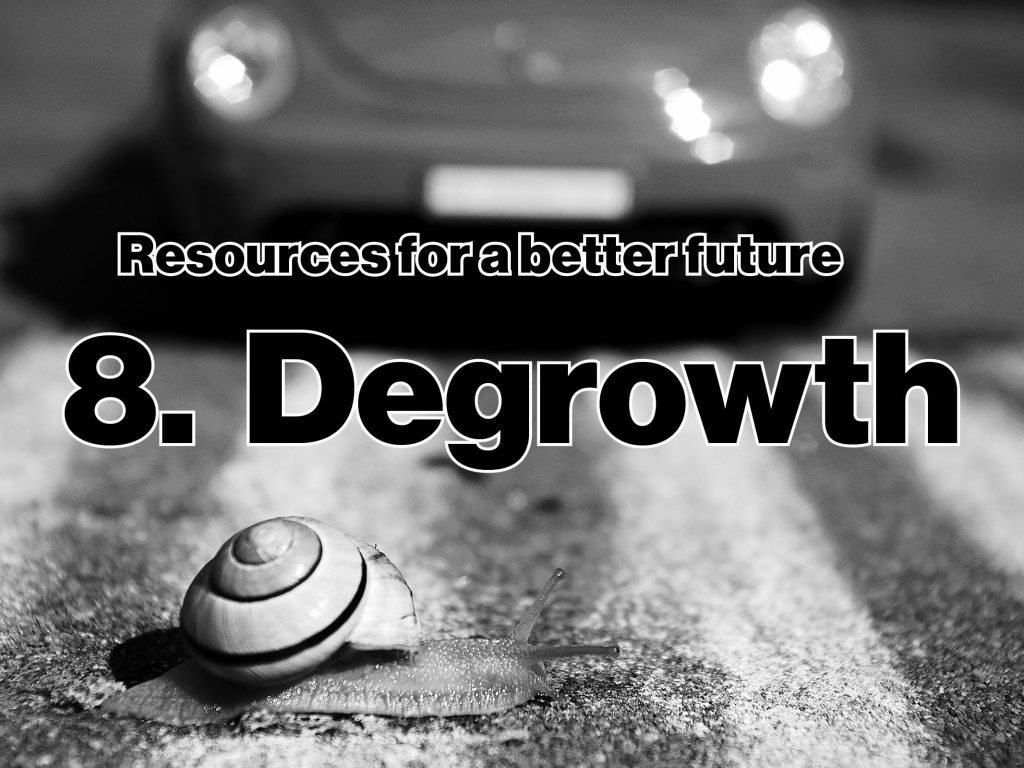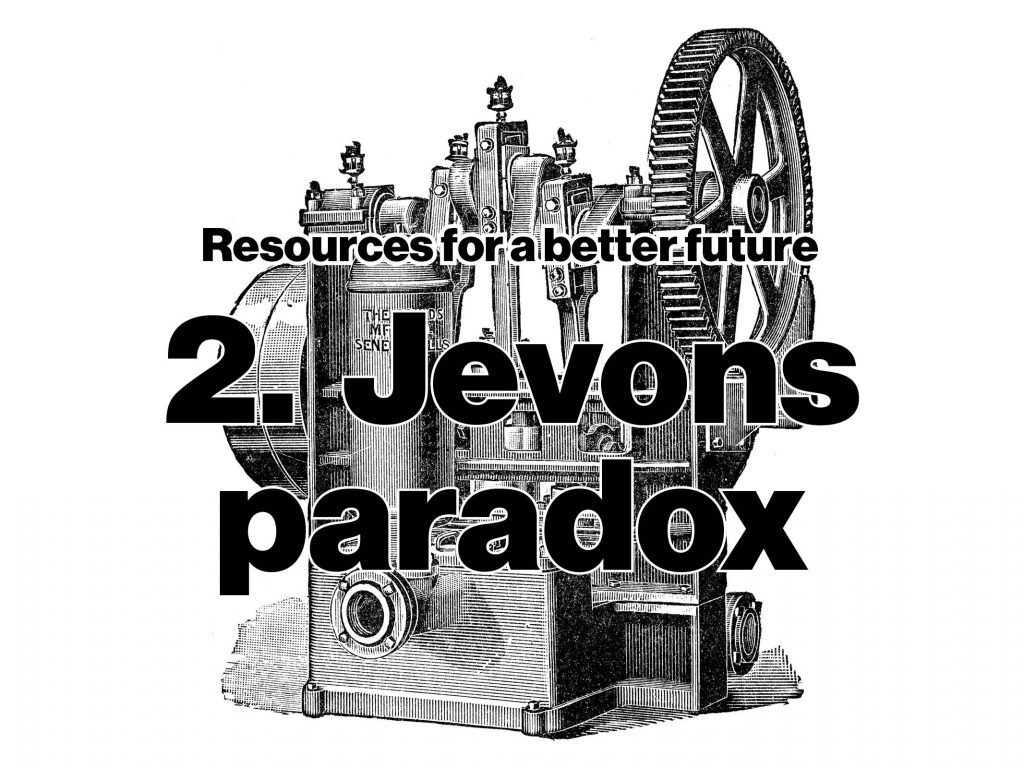
by Doug Banks
What is GDP?
Gross Domestic Product, or GDP, measures economic activity. Technically speaking, it equals the sum of all goods and services produced within an economy over a certain period. To oversimplify it, we could think of GDP as the sum total of all the price tags within a country’s borders. Metaphorically speaking, GDP is the only universally-recognised heart-rate monitor for determining the health of capitalist economies. Capitalism operates on economic growth, and GDP measures growth.
Because of this, GDP has become the most influential political and economic metric in the modern world. Governments, corporations and institutions use it to direct resources, frame discussions, and inform crucial decision-making.
And ever since GDP became our universal stand-in for social progress, it has had the effect of reshaping entire societies in its own image—which is problematic, as GDP is a very sexist, western-centric, careless, ecologically-destructive, and altogether bad image.
Where did GDP come from?
Before the 1930s, to paraphrase the sociologist Daniel Hirschman, the economy as we currently know it ‘did not exist.’ But that’s not to say that our ancestors didn’t act economically. People have been making, buying, and trading things basically forever. But it was only in the decade before World War II that our current understanding of the economy—as something that can be examined, diagnosed, prescribed and intervened upon—was conceived.
It was only in the decade before World War II that our current understanding of the economy—as something that can be examined, diagnosed, prescribed and intervened upon—was conceived
Gross National Product, the precursor to GDP, was invented by the economist Simon Kuznets to help the U.S. recover from The Great Depression. His logic was simple: their economy was obviously broken, but before they could fix it they needed to figure out how to measure it. GNP became the first widely-adopted method of measuring an economy, until the U.S. replaced it with GDP in 1988. (GNP measured all economic activity by a country’s citizens, regardless of where they were in the world. GDP measures all economic activity within a country’s borders, regardless of the nationalities of the people involved.)
How did GDP become important?
In 1944, as World War II was winding down, the leaders of the Allied Nations met in Bretton Woods, New Hampshire, to decide how the world would be rebuilt. They set in motion a few things that would change the course of history forever. First, they cemented GNP (and then GDP) growth as their standard tool for measuring economic progress and development.
Then, to help reinforce this emerging world order, they established intergovernmental institutions such as the International Monetary Fund (IMF) and the World Bank, and later the Organization for Economic Co-operation and Development (OECD) and the World Trade Organization (WTO). Promoted as the flag-bearers of international development, many of the programmes these institutions have overseen dismantled national sovereignty in the Global South to install Western-friendly and GDP-centric policies.
Capitalism, by definition, must expand. For half a millennium private firms and individuals have been finding new ways to grow their wealth. But it’s only since the Bretton Woods Conference that pursuing a single, standardised metric of economic growth has become the primary public objective of almost all of the world’s most influential governments and institutions. From that moment onward, we have lived in a world religiously devoted to the pursuit of GDP growth—often at the expense of everything else.
Why is GDP a problem?
GDP was designed to measure an economy getting ready for war, but now it’s used to measure social progress in general. This mutation was already obvious during the Cold War, when GDP became the ideological benchmark for comparing the relative success of capitalism and state socialism.
Today it’s no different. If a country grows its GDP faster than others, they can claim they’re ‘winning’ at the game of international development, and it’s implied that this will automatically improve the quality of life of its citizens.
GDP serves as a ‘scorecard’ for political success, which means policymakers will generally favour and implement the policies that will increase it
GDP serves as a ‘scorecard’ for political success, which means policymakers will generally favour and implement the policies that will increase it. As time passes, societies transform to resemble GDP—which is a problem, because GDP resembles a very sexist, western-centric, careless, ecologically-destructive, and altogether bad way for a society to be structured.
Sexist. By only counting activities that have a price tag, GDP completely ignores all manner of unpaid labour—like having and raising children, elderly care, housekeeping, etc.—that is traditionally undertaken by women. In this way, GDP has a sexist bias implying, mistakenly, that these essential services are less ‘productive’ than what is traditionally men’s work, and should therefore be less respected.
Western-centric. GDP is, and always has been, rooted in the deeply colonial notion that Western nations have it all figured out, and everyone else would be much better off if they just followed in their footsteps. More often than not, they haven’t been given a choice.
For example, during the debt crisis of the 1980s, many nations of the Global South were struggling to repay mounting debts to Western banks. In response, the IMF and World Bank forcibly imposed ‘structural adjustment programmes’ on their economies. In short, this meant their governments had no choice but to cut social spending, privatise public assets, dissolve labour and environmental protections, and focus single-mindedly on increasing GDP to repay their creditors in the Global North.
Careless. The rules of a game dictate how its players behave. If GDP is our social ‘scorecard,’ then the ways it measures success will, on an aggregate scale, have an effect on how people and organisations behave. Any brief examination of the activities that GDP registers as ‘good’ for an economy reveal it to be highly problematic and careless toward human wellbeing. As the Dutch historian Rutger Bregman noted, ‘If you were the GDP, your ideal citizen would be a compulsive gambler with cancer who’s going through a drawn-out divorce that he copes with by popping fistfuls of Prozac and going berserk on Black Friday.’
Ecologically-destructive. GDP has always been inseparable from resource consumption, emissions, and environmental degradation. Proponents of ‘green’ GDP growth maintain that with enough engineering, innovation and entrepreneurial flair, we’ll soon be able to ‘decouple’ economic growth from environmental pressures and keep growing happily forever.
However, as seductive as it is, there’s a problem with decoupling: it has barely any empirical grounding in current or projected technologies. On concluding a series of highly optimistic decoupling models in 2016, the Australian scientist James Ward remarked that ‘growth in GDP ultimately cannot be decoupled from growth in material and energy use,’ and that it is ‘misleading to develop growth-oriented policy around the expectation that decoupling is possible.’
Altogether bad. Despite all of the above, one must assume that maximising GDP growth is, overall, necessary to produce good outcomes for people—otherwise why would governments pursue it so furiously? However, there is a strong scientific consensus that this simply not the case.
According to the economic anthropologist Jason Hickel, ‘there are many countries that manage to achieve strikingly high levels of human welfare with relatively little GDP per capita.’ What’s more, research has found that above a certain level—a level which all nations in the Global North have long since passed—increasing GDP can actually cause human well-being to decrease.
Mounting evidence suggests that there is no automatic relationship between rising GDP and rising welfare. When it comes to improving citizens’ quality of life, the most important factor is not pursuing the maximum levels of GDP growth or wealth, but instead implementing policies that more justly distribute the benefits of new and existing wealth.
What alternatives exist?
GDP’s most enthusiastic critics typically fall into one of two broad categories (or both): those pushing to replace GDP as our metric for growth and progress in particular, and those advocating to abandon economic growth as humanity’s central goal altogether.
For almost as long as it has existed, some economists have argued that GDP cannot, and should not, be used as a proxy for human progress. They’ve been mostly ignored. But as focus this century sharpens on social and ecological issues, mainstream appetites are increasing for ‘Beyond GDP’ alternatives such as the Better Life Index or Genuine Progress Indicator. Recently, in rapid succession, the governments of New Zealand, Scotland, and Iceland—all led by women—committed to exchange well-being for GDP as their main policy objective.
While most agree that moving beyond GDP is essential, some economists, researchers, and activists believe it’s only the beginning of the change we need if we want to avert full-blown climate catastrophe and create a more egalitarian society. Because ‘green growth’ is empirically unrealistic—a fantasy, some would call it—many maintain that we should begin transitioning toward an economy capable of thriving without needing any more economic growth at all.
This philosophy takes form under the banner of ‘degrowth,’ a constellated, rapidly-growing movement advocating for the reduction of humanity’s overall resource and energy consumption, as well as the redistribution of income and resources. ‘In short,’ the organiser and activist Jamie Tyberg writes, ‘degrowth tells us to care for the earth’s systems, to care for the people, and to redistribute any surpluses back to the land and the people,’ with the ultimate goal of ending ‘capitalism-colonialism on a global level.’
Rethinking progress
In the span of less than a century, our search for social progress has been all but completely outsourced to an abstract measurement of ‘the economy’—which is itself a relatively recent abstraction of life itself. Leaning on metrics and abstractions isn’t necessarily a bad thing. Coordinating complex, interconnected societies would be unthinkable without them. But it becomes an issue when ever-expanding domains of human activity become folded into the pursuit of a problematic and inhumane conception of life.
Perhaps it’s time to stop trying to sculpt our societies into an image of the economy from a bygone era. Maybe we should rethink our metrics, measurements, and very meanings of progress, and start reorganising our economies in ways that celebrate human and non-human nature, rather than constrict it.
Further resources
Clifford Cobb, Ted Halstead, and Jonathan Rowe, ‘If the GDP is Up, Why is America Down?’ The Atlantic (October 1995).
Although it’s pretty dated, this 1995 Atlantic article is still a great introductory critique of GDP.
Daniel Abramson Hirschmanm, Inventing the Economy Or: How We Learned to Stop Worrying and Love the GDP (PhD diss., University of Michigan, 2016).
A deeper exploration into the conception of our modern-day fetishism for GDP and the economy-at-large. Go here if you’re interested in how a vague idea became a world-swallowing reality.
Maristella Svampa, Development in Latin America: Toward a New Future (Nova Scotia: Fernwood, 2019).
A thorough account of how contemporary narratives of economic development via GDP have enabled countries in the Global North to extract land, resources, and cheap labour from Latin America.
Arturo Escobar, Federico Demaria, Ashish Kothari, Ariel Salleh, and Alberto Acosta, Pluriverse: A Post-Development Dictionary (New Delhi: Tulika Books, 2019).
A beautiful compilation of cultural visions, life philosophies and alternatives to GDP-centric development from across the globe that growth-based economics has either repressed or actively oppressed.
Jason Hickel, Less Is More: How Degrowth Will Save The World (London: Penguin Random House, 2020).
An accessible introduction to degrowth, with some really useful sections on the past and present of GDP growthism and how it incentivises human exploitation and ecological devastation on a mass scale.
Doug Banks is an Australian researcher, strategist, and writer exploring language, economics, culture, and the places they intersect. He is currently head of research & narrative at ArtRebels, a Copenhagen-based collective of cultural researchers and designers.


